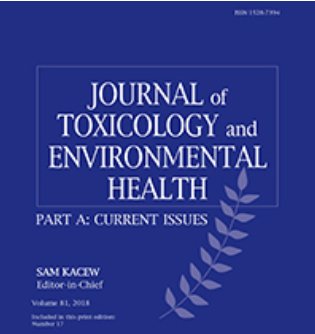Hepatic and renal histology and mercury concentrations of North West and North East Greenland narwhals (Monodon monoceros)
New publication by Christian Sonne, Pall S. Leifsson, Jens Sondergaard, and Rune Dietz

Abstract:
Narwhals (Monodon monoceros) are at the top of the Arctic food web and therefore might biomagnify high total mercury (Hg) concentrations in organs and tissues. The aim of this study was to determine histopathology and Hg concentrations in liver and kidneys from 15 North East Greenland narwhals (3 subadult females, 8 adult females, 3 subadult males, and 1 adult male) and compare data with previous observations of 12 North West Greenland specimens (1 subadult female, 4 adult females, 1 subadult male, and 6 adult males). The zoological length was significantly larger and hepatic and renal concentrations significantly higher in adults compared to subadults. When comparing tissues, the Hg levels were significantly the highest in liver, while a correlation between metal levels in liver and kidneys was positive and significant. Histological examination of renal tissues presented four types of glomerular lesions (capillary dilatation [0–100%], membrane thickening [0–100%], dilatation of space [0–80%], and sclerosis [0–70%]) and two tubular lesions (atrophy/hyalinization [0–40%] and casts [0–60%]). Hepatic tissues exhibited three portal lesions (fibrosis [0–33%], cell infiltrates [0–40%], and bile duct proliferation [0–40%]) and two parenchymal lesions (steatosis [83–100%] and lipid-filled Ito cells [0–33%]). All 12 lesions were found in adult whales from North West Greenland while eight were present in adult whales from North East Greenland. Six lesions were detected in subadults from North East Greenland and four in subadults from North West Greenland. A significantly higher frequency of dilatation and hyalinization of Bowman’s space and capsule and glomerular capillary dilatation was found in adult narwhals from West Greenland. There was no marked difference in Hg concentrations in whales with and without histological lesions. In conclusion, the prevalence of histological changes and Hg levels were the highest in adults and therefore both age and metal are important factors to include when evaluating liver and kidney lesions in narwhals.
